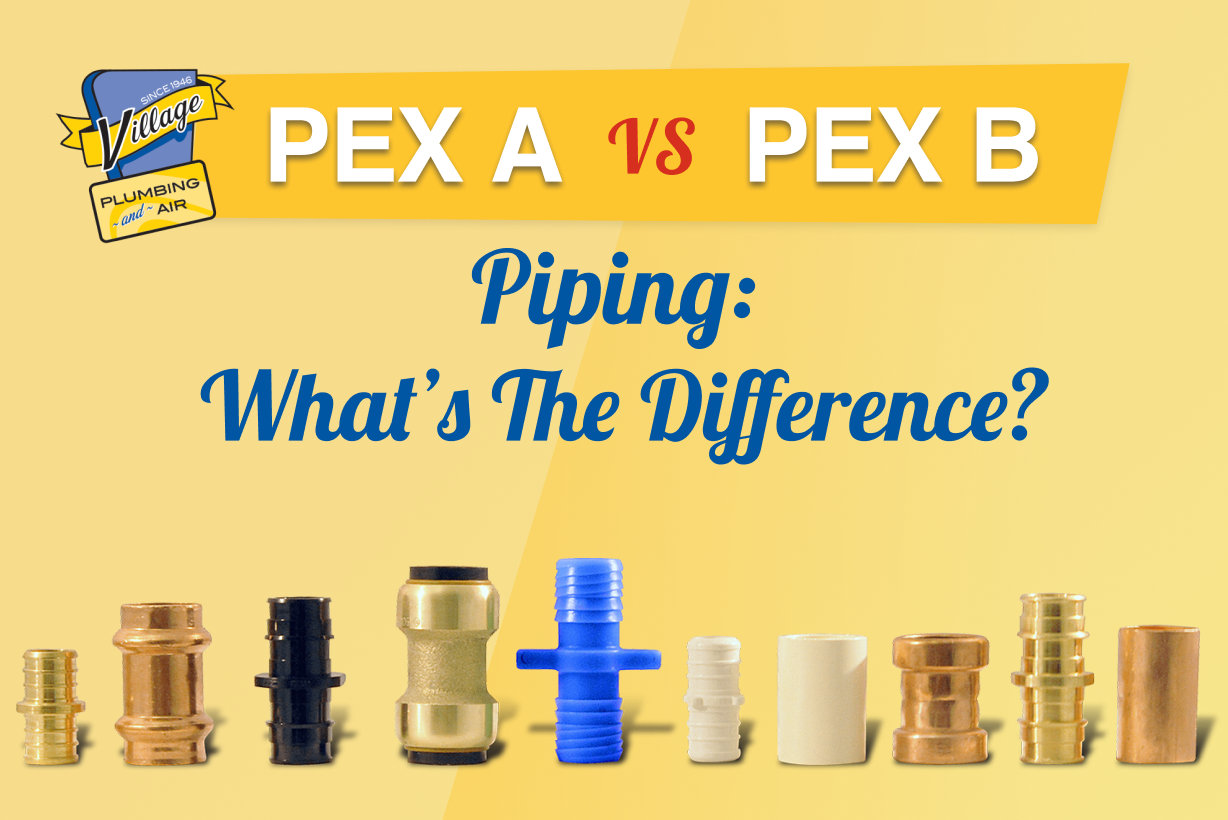Today, PEX piping is commonly used by residential plumbers. However, it wasn’t commonplace in the U.S. Until the mid-1980s, after having been introduced in Europe in 1968. Cross-linked polyethylene, or PEX, is available in different types. For this article, we’ll focus on two of them, and discuss PEX A vs. PEX B, their benefits, and when one is preferred over another.
Both forms are the same size, meeting Copper Tube Size standards. They also meet the ASTM F876 performance standard and NSF/ANSI/CAN 61 for installation in water distribution systems. And for use in multi-purpose fire suppression systems, they meet standards such as UL 1821.
PEX A and PEX B are rated the same way too, especially when it comes to material designation codes for chlorine resistance (up to Class 5), UV resistance (up to Class 3), and pressure rating. All PEX tubing sold in the U.S. has a 630 HDB rating, meaning it has a pressure rating of 160 psi at 73℉.
What Is PEX A?
High-density polyethylene (HDPE) is cross-linked using the Engel method, which involves adding peroxides before the product is formed. This improves bonding at the atomic level and also allows for a higher degree of cross-linking. PEX A is:
- More flexible, making it expandable and suited for fastening by cold expansion.
- Resistant to kinking that will make a pipe unusable.
- Installed with an expansion-style fitting.
Installation of PEX A piping requires an expansion tool. The fitting is larger in diameter, so you’ll need to enlarge the pipe and sleeve with the tool, then slide the fitting in. Once you remove the tool, the material will shrink back to normal size, tightening it around the fitting.
Why Use PEX A?
The risk of flow restriction is eliminating by the PEX A joining method. PEX A is also easier to fit in tight spaces. You can join it with existing pipe while reaching in a comfortable position. You’ll have a few seconds before the expansion fitting shrinks back. However, this fitting may take longer to shrink in colder environments.
What Is PEX B?
A silane process, or steam or moisture cross-linking, is used to form PEX B pipe once the HDPE is extruded. The product is passed through steam. Meanwhile, a silane catalyst triggers cross-linking. PEX B is the most common PEX pipe. It offers the following benefits:
- An expansion tool is not required to join PEX B pipe, making installation faster and simpler.
- The joining method is not affected by hot or cold temperatures.
- Meets the same ASTM standards as PEX A pipe.
Never try to expand the end of a PEX B pipe, as it is inflexible. The fittings are smaller as well, so pipe diameter is tighter at the joint. This increases resistance to flow, meaning the volume of water reaching fixtures is decreased. And since the joining method isn’t as ergonomic, fitting the pipe on the sleeve crooked is a risk, and can start a leak. To avoid this, the crimp tool must be square on the sleeve.
Other Considerations
Both types have maximum temperature and pressure ratings. With bursting pressure, it’s important to know that pressure ratings decrease at higher water temperatures. There’s a key consideration when you compare PEX A vs. PEX B; pipes can and do freeze when it’s cold. Due to its expansive nature, PEX A can tolerate up to 500 psi without bursting; PEX B is more rigid so doesn’t hold up as well in extreme conditions. Climate and weather can therefore impact your choice and how you protect the pipe against cold temperatures.
Contact Village Plumbing
We can further help you evaluate PEX A vs. PEX B piping and what may be best suited for your home. If you have water leaks, water pressure issues, or outdated piping, our licensed technicians can address your plumbing questions and concerns. We also offer a range of other plumbing services, including drain cleaning, sewer line repair, and hot water heater installation. To get started, request service on the web or call 713-526-1491 today.

One Response
Great info, an easy to follow and understand explanation. I’ve used Pex-A expandable with shark and pex fittings for a decade or more, repairs or small add on with maybe three failed joints due to operator error. My local hardware store had pex-B. I’m glad I saw your post and drove to my wholesaler to get the “A”.
Comments are closed.